The 4 Signals of
Personalization Maturity
Based on criteria such as internal commitment to personalization, allocation of resources, process implementation, utilization of data, testing methodology, audience strategy, and more, we identified 4 signals to help measure a company’s personalization maturity. Companies are then bucketed into 4 levels of maturity: Absent, Basic, Advanced, and Pioneer.
Here’s a bit more on each signal:
A strong culture of personalization is evidenced by it being made a top priority, with clear, quantitative business goals and KPIs that are used to inform a testing program and strategy. Those that will benefit most put personalization at the core of their customer journey efforts and have full organizational alignment.
Leadership appoints the right business, technical, and creative talent to drive personalization orchestration among other departmental programs or activities, which can be achieved in a timely, coordinated, and cohesive fashion across key digital channels.
The benefits of personalization cannot be realized by simply acquiring the right technology or set of capabilities. Mature brands have processes around data identification and activation, know how to derive insights from and distribute test results, and have free rein to conduct cross-site testing – paving the way to their success.
A strong personalization strategy requires alignment on the business’ key audiences. Not even the right resources will be enough to generate results without a data-driven approach and KPIs that measure efforts for shaping the future roadmap. That means following the data rather than anecdotal instinct or executive mandates for program prioritization.
Signal 1: Culture
To implement personalization successfully, organizations must educate about the program’s potential at every level, cultivate a deep, cross-functional culture of experimentation, and evolve previous practices and mindsets.
Brands grapple with the gap between value recognition and actioning of personalization
A growing number of grocery/CPGs have recognized the importance of personalization, with varying degrees of implementation and strategic priority across the industry. While the belief in the practice’s significance is strong, respondents feel it has yet to permeate every organizational level successfully. Additionally, only some fully comprehend personalization’s quantified impact on the larger business strategy.







Signal 2: Resources
Organizations need critical functions (e.g. channel owners, creative gurus, business operators, and technical executors) to start and scale a personalization team across business units. Ideally, these functions would roll up under one central team or work cross-functionally to activate in a unified capacity.
Lack of devoted business operators for personalization hinders strategic cross-departmental deployment
Despite incorporating diverse expertise, most organizations lack a dedicated resources at the team-level. Further, there’s a limited prevalence of specific business units dedicated solely to these tasks compared to technical owners. This indicates that organizations are more likely to view personalization as a technical endeavor rather than a business one, and thus, may be viewing program process in optimizing for short-term performance indicators (e.g. speed or efficiency) over improving the overall customer experience long-term.

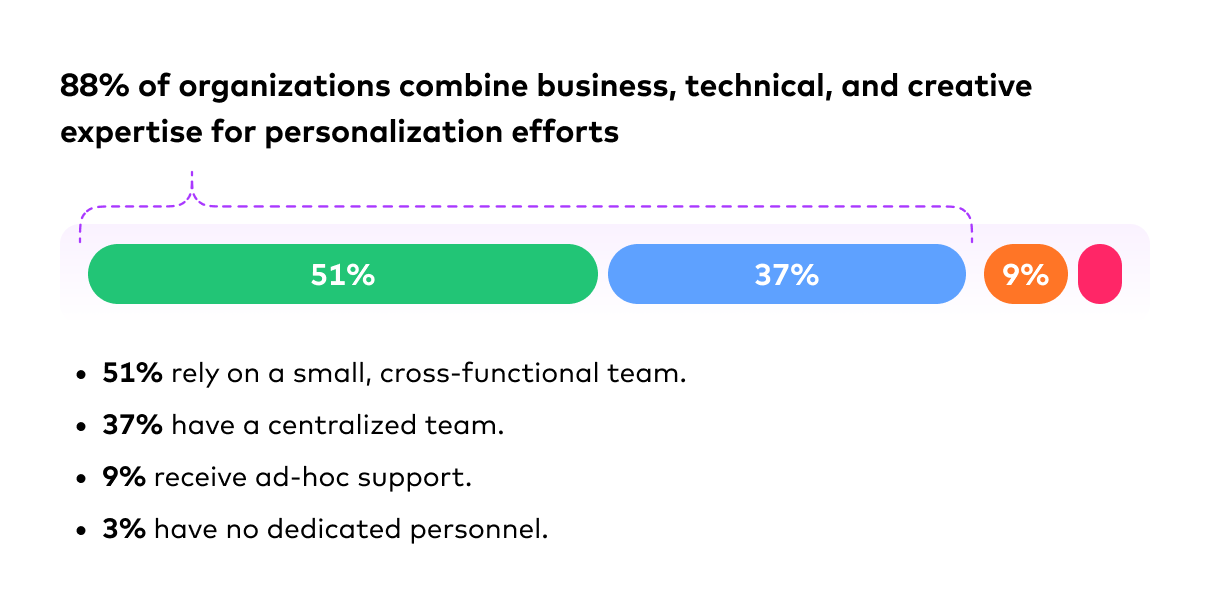


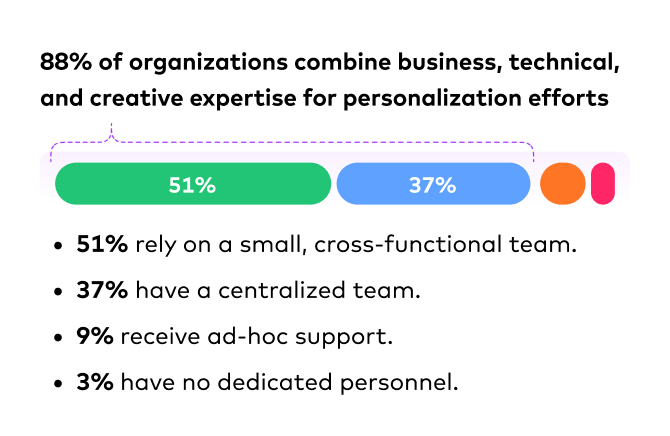


Signal 3: Processes
All organizations need to complete several critical steps to grow sustainably long-term: Analyze existing data; Brainstorm concepts; Define a hypothesis and goal; Plan testing priorities, parameters, and conditions; Build the experience; Optimize experiences and tests based on new insights; and Circulate outcomes to all cross-departmental stakeholders.
Current organizational approach impedes a scalable personalization framework and results
While most organizations have identified meaningful data sources to fuel their personalization strategy, a significant portion has yet to integrate them fully into their personalization efforts. This indicates that brands often need to be more extensive in their initial analysis and, therefore, now hold a less comprehensive and holistic understanding of customer preferences and behaviors.
Additionally, most organizations face constraints in implementing comprehensive testing practices in core website elements, further impeding their ability to thoroughly evaluate and optimize their strategies.
Even if organizations granted personalization teams the autonomy to conduct comprehensive testing, most lack the procedures to leverage the collected data and streamline their key program activities. Most organizations do not utilize data-driven insights to inform iterative testing and refining processes, hindering their ability to optimize an audience strategy.
While most organizations share their testing results, a significant portion may not do so in a manner that meets the standard of excellence. Many organizations lack a systematic approach to sharing testing outcomes, potentially hindering effective communication and collaboration across departments and executive presence.
Those organizations that hardly circulate results may face a gap in the communication process within these organizations, which could impede the collective understanding of testing outcomes and hinder the alignment of efforts toward common goals.


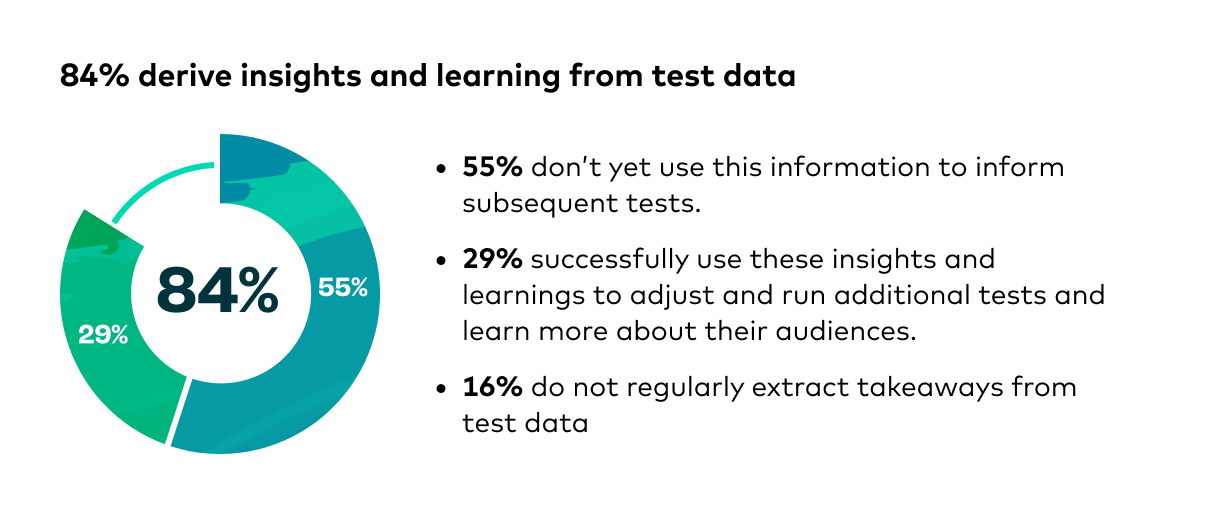
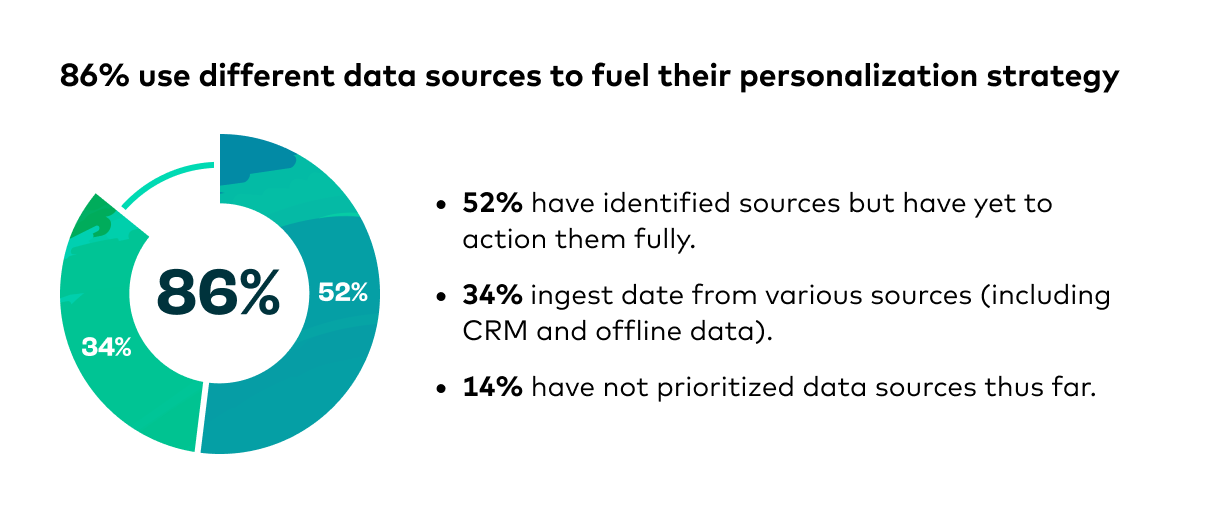
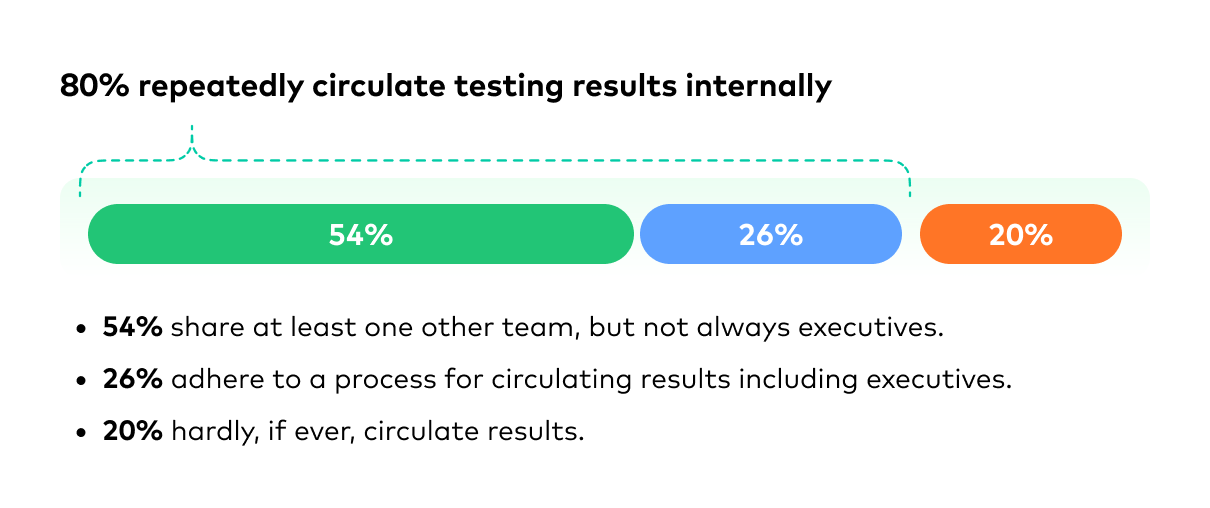



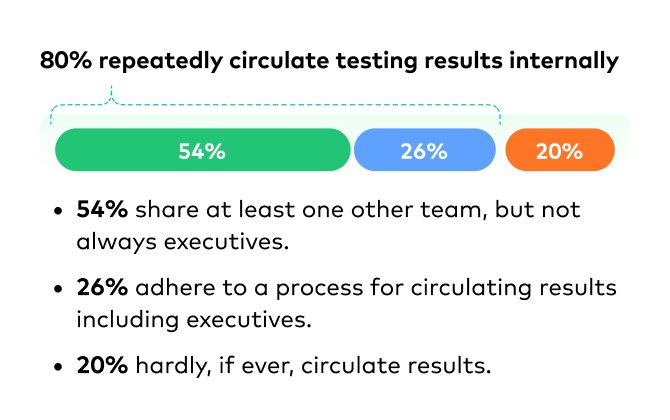
Signal 4: Effectiveness
Personalization isn't just a tactic; it's a comprehensive discipline. Simply securing the right tools isn't enough. Our research demonstrates that organizations that develop a robust ecosystem around their personalization efforts consistently achieve superior results.
Brands have implemented projects, not programs, leaving efforts without purpose or strategic direction
"Successful personalization hinges on a strategic, data-driven roadmap that cuts through the clutter of instinct-based decision-making and executive directives," says Jonatan Ramirez, Vice President, Global Head of Sales Engineering at Dynamic Yield. "Without this, organizations will never mature their out-of-the-box personalization tactics into the bespoke powerhouse that is a strategic advantage."
The data underscores that the preference for short-term wins often comes before establishing the long-term processes required for effectiveness and optimization. For example, many organizations have a documented audience strategy, but practical, long-term considerations like implementation and team alignment still need to be improved. Additionally, most brands continually favor anecdotal processes over data-driven methodologies.




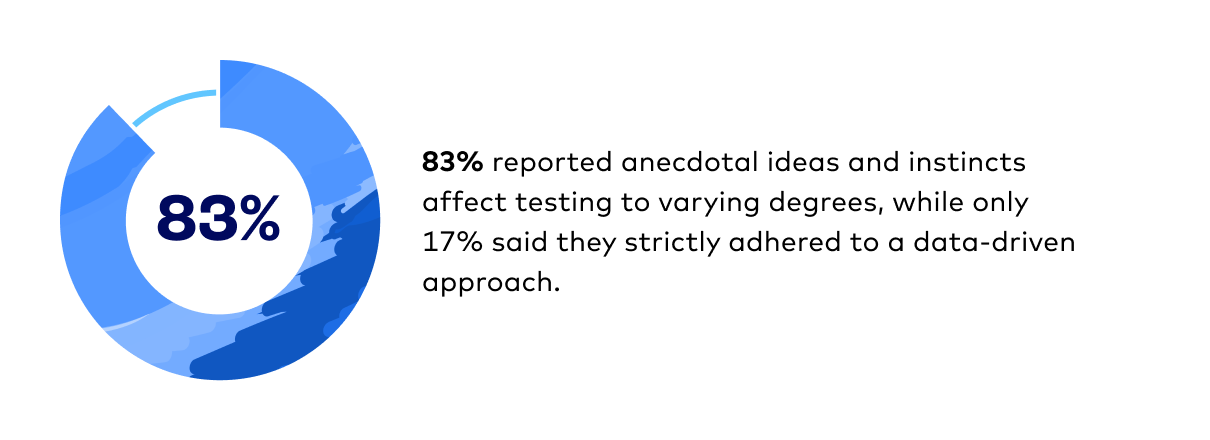




Personalization
is personal
Personalization maturity by geography
- AMER and APAC companies signal the most mature in personalization, with Europe and UAE following closely behind.
- Data from AMER shows a polarization in the region's maturity. In other regions, a show of Basic responses usually results in fewer organizations with a Pioneer status. While AMER carries the most Pioneer responses, they're also often equally developing (Absent + Basic), especially in Resources, Processes, and Effectiveness.
- European and UAE companies present a more consistent front, with most companies considering themselves Advanced and equal amounts in Absent, Basic, and Pioneer levels.
- More than two-thirds of S AMER companies have achieved Advanced status in Culture signals. Yet, overall, they are the region with the most room to develop in personalization maturity, with many companies yet to break into the Pioneer level across signals.


Our take on the findings:
The data aligns with overall trends in eCommerce personalization per region: The greater the penetration per market, the greater the ability to implement personalization in grocery scenarios and quickly mature the market.
Personalization maturity by company size
- Companies with 2000+ employees were most likely to achieve Pioneer status overall, with more than 50% of companies receiving this title.
- While larger companies may have extensive Culture, Resources, and Processes in place, many need to improve in the Effectiveness signal.
- The smallest companies (200-499 employees) had fewer Pioneer entries than medium-sized companies, but they can hold their own against the biggest enterprises regarding the Culture signal.
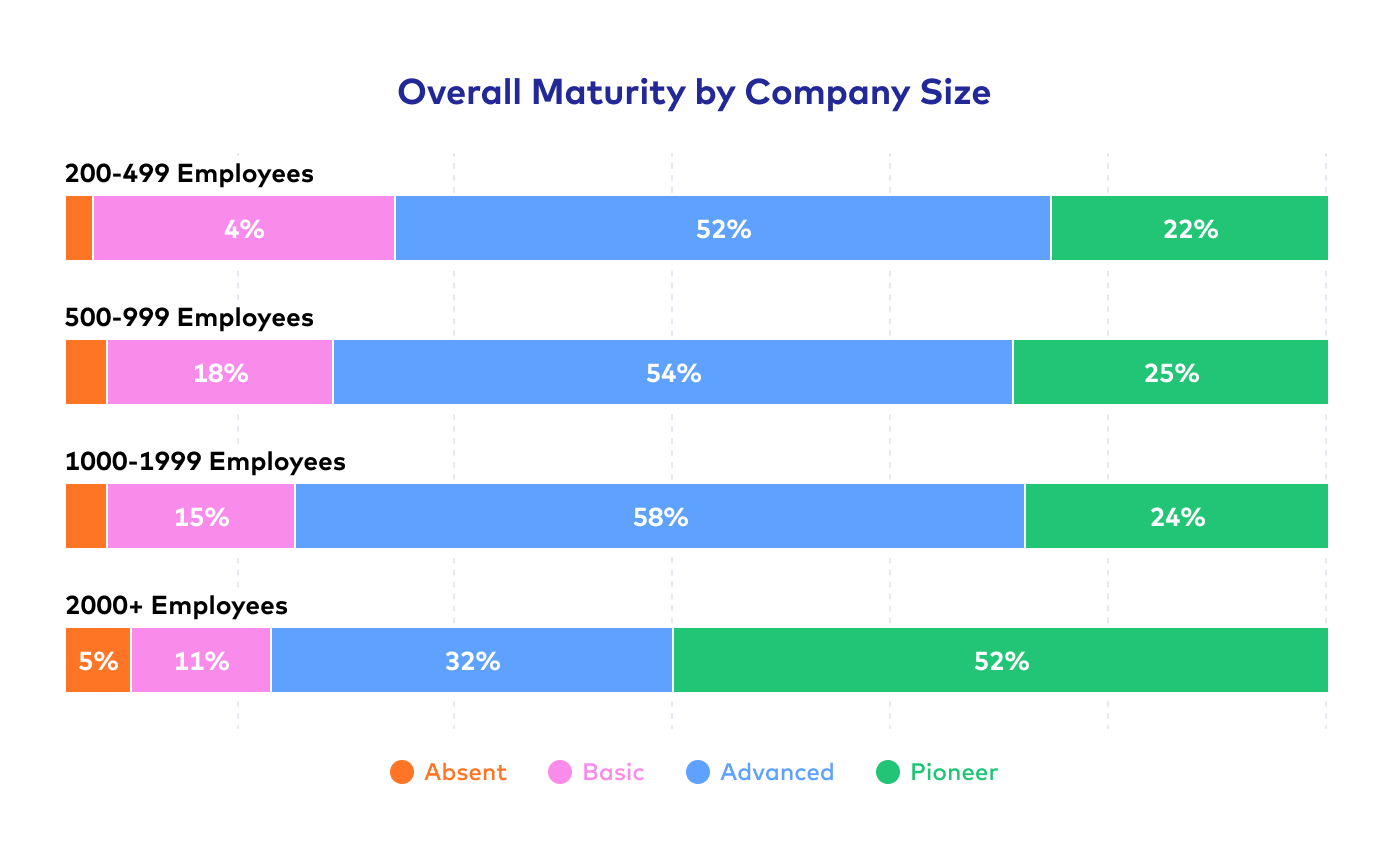

Our take on the findings:
For the most part, the bigger the company, the more mature the personalization program. This can be attributed to enterprises typically being more process-oriented, influencing long-term planning. Because of this, their teams can also be more likely to receive more generous resourcing and budgeting. However, internal silos and stricter regulations may keep robust personalization programs from reaching peak efficiency.
Personalization maturity by seniority
- Middle Managers are confident about their current level of personalization maturity, often over-indexing on "Pioneer" status compared to Senior Managers and those in the C-Suite.
- Senior Managers were also likely to be more critical of a program's Effectiveness, responding more frequently that their programs were at the Absent and Basic level compared to other job levels and at higher rates than the global average.
- C-level executives were most likely to view personalization maturity in their organization as less mature than senior and middle managers—a reading more in line with the global findings.

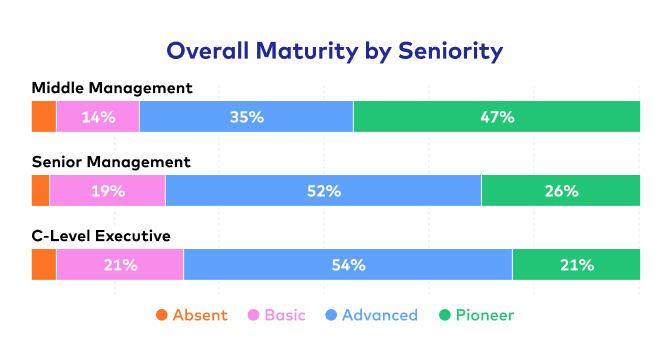
Our take on the findings:
The disparity between job level and perception of maturity indicates potential communication gaps in hierarchical levels within organizations. This disconnect can be tied to other findings: one, that many programs have trouble regularly communicating their test results to different areas of the org, including executives; and two, that testing is not associated with overall business goals. While Middle Managers may report remarkably mature personalization programs, these gains could be lost in translation by senior leadership.